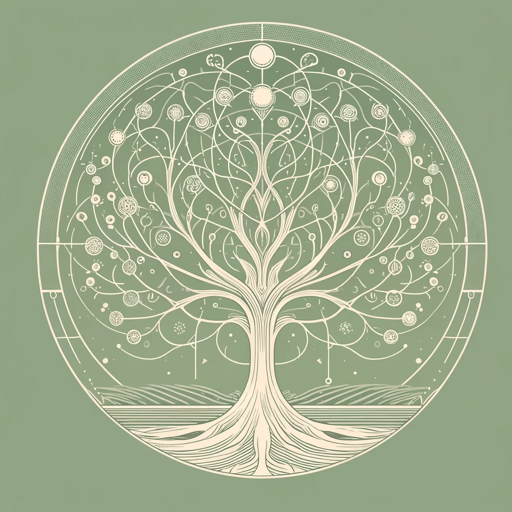86 pages • 2 hours read
Edith HamiltonMythology: Timeless Tales of Gods and Heroes
Nonfiction | Book | Adult | Published in 1942A modern alternative to SparkNotes and CliffsNotes, SuperSummary offers high-quality Study Guides with detailed chapter summaries and analysis of major themes, characters, and more.
Summary and Study Guide
Overview
Originally published in 1942, Mythology is primarily a compendium of Greek and Roman myths, with a brief final section on Norse mythology, written by American educator and classicist Edith Hamilton. Hamilton engages with the myths as both a storyteller and a literary critic. She organizes and retells the myths narrated in ancient sources, and she assesses those ancient sources as works of literature. Her approach is grounded in the assumptions that Greek and Roman civilizations are the founding cultures of “Western Civilization,” that skepticism enables greater sophistication than does piety, and that a coherent narrative can be constructed from ancient sources that have survived from across Greek and Roman antiquity.
This guide refers to the 2012 Little, Brown and Company Kindle edition.
Content Warning: This book includes descriptions of sexual violence, family violence, bigoted language, suicidal ideation, incest, kidnapping, and death.
Summary
In her Preface and Introduction, Hamilton lays out her intention to offer readers both information about the myths and insight into the minds and imaginations of those who composed them. Noting that her sources were composed across 1,200 years, Hamilton describes early sources as simplistic and pious against later ones that were urbane and enlightened. For this reason, she claims, it is not possible to unite the tales into a single narrative. In practice, however, she selects plot points scattered across ancient sources composed across hundreds of years and within discrete contexts to create unified narratives for individual myths. For example, she combines elements from Homer’s eighth-century BC Iliad and Odyssey and Virgil’s first-century BC Aeneid to retell myths around the Trojan war.
The book is divided into seven sections. Part 1, “The Gods, the Creation, and the Earliest Heroes,” presents the cosmology of the ancient Greeks and Romans, beginning with Chaos (which means “chasm” in ancient Greek), the birth of the Titans, and their eventual overthrow by Zeus and the Olympians. Drawing on a broad range of ancient sources, she covers how Greek and Roman ancients represent the cosmos’s creation, who their gods were, what each oversaw, and when, why, and by whom humanity was created. She offers her view on which gods were most important, based on her interpretation of source material and her beliefs about the human imagination. The section concludes with a series of myths about pre-Trojan war heroes that provide origin stories around geography and flowers.
In Part 2, “Stories of Love and Adventure,” Hamilton retells nine myths about love and five about adventure. Arguably the most influential of the love myths are those of Cupid and Psyche, Orpheus and Eurydice, and Daphne and Apollo. The adventure myths include Jason and his quest for the Golden Fleece, Phaethon and his fatal attempt to drive the chariot of the Sun (his father), Bellerophon’s taming of Pegasus, and Daedalus and his attempt to escape Crete with his son Icarus.
Part 3, “The Great Heroes Before the Trojan War,” narrates the myths of Perseus, Theseus, Hercules, and Atalanta. Part 4, “The Heroes of the Trojan War,” begins with the marriage of Achilles’s parents, Peleus and Thetis, and the competition among three goddesses (Hera, Athena, and Aphrodite) for the golden apple of discord that set the stage for the war. Hamilton then recounts the events of the Iliad (the quarrel between Achilles and Agamemnon and its aftermath), Odyssey (Odysseus’s attempt to return home after the war), and Aeneid (Aeneas’s flight from Troy and founding of the Roman Empire).
In Part 5, “The Great Families of Mythology,” Hamilton describes three family trees around which many of the myths revolve. The House of Atreus includes Tantalus, Agamemnon, and Iphigenia, the latter two being central figures in Trojan war stories. Oedipus and Antigone, whose myths are the central plots of several of Sophocles’s surviving plays, are central figures in the House of Thebes. Myths associated with the House of Athens, notably that of Procne and Philomela, figure prominently in Ovid. Part 6, “The Less Important Myths,” lists an assortment of myths and mythical figures, some of which do not fit obviously into any of her previous sections. These include the stories of Midas, Aesculapius, the Danaids, Arachne, and the Centaurs, among many others.
Her final section, “The Mythology of the Norsemen,” provides a brief overview of Norse mythology: how its cosmos was created, its most important gods and heroes, and what these suggest about the “Teutonic” worldview. Hamilton’s expressed rationale is that Norse mythology completes the imaginative and intellectual landscape of her ethnic group. She views the Greeks and Romans as her “cultural” ancestors and the Norsemen as her “racial” ancestors.


